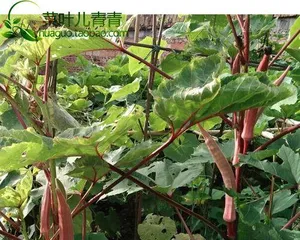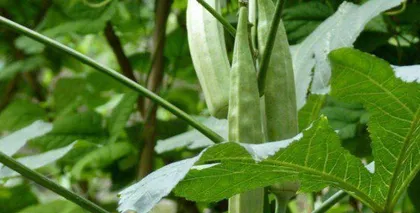Okra is a nutritious and delicious vegetable that is relatively easy to grow, making it suitable for home gardens, gardens, or balconies. This article will provide a detailed introduction to the selection, sowing, care, harvesting, and frequently asked questions about okra seeds, hoping to be helpful to growers.

I. Precautions for Selecting Okra Seeds
When selecting okra seeds, choose high-quality seeds from reliable sources. You can purchase them from regular agricultural supply stores or online shops. First, check if the packaging is labeled with information such as the manufacturer, variety, and origin. Secondly, observe the appearance of the seeds and select those that are plump, free from pests and diseases, and without mechanical damage.
II. Soaking Treatment for Okra Seeds
Okra seeds are relatively hard and can be slow to germinate. Before sowing, you can soak the okra seeds in warm water for about 8 hours to promote germination and sprouting. After soaking, rinse the seeds to remove any surface foam and impurities.

III. Sowing Time and Method for Okra
The best time to sow okra is generally from mid-April to early May. When sowing, first spread a layer of breathable, well-draining material like brick chips or vermiculite at the bottom of the pot, then add a layer of peat or leaf mold. Scatter the seeds evenly on the soil surface, then cover them with a thin layer of soil and press down gently. Leave a distance of 10-15 cm between each seed to allow for growth and ventilation.
IV. Light and Temperature Requirements for Okra Seeds
Okra prefers a sunny, warm, and humid environment. During the initial growth stage, place the potted plant outdoors or on a balcony to ensure it gets 6-8 hours of sunlight daily. The daytime temperature should be above 20°C and the nighttime temperature should not fall below 15°C. Ensure adequate ventilation at night.
V. Watering and Fertilizing Okra
Okra likes moist soil but does not like waterlogging. During the growing period, keep the top layer of soil moist. You can apply organic fertilizers in moderation, such as well-rotted chicken manure, decomposed leaves, or kitchen waste.

VI. Pruning and Staking Okra
During the growth of okra, frequently check the plant's condition and promptly prune withered branches and leaves to keep the plant tidy. At the same time, provide timely support and tying to prevent the plant from leaning or breaking.
VII. Disease and Pest Prevention for Okra
Okra is susceptible to diseases such as powdery mildew, downy mildew, and early blight, and can also be harmed by pests like aphids and leafhoppers. During the growing process, pay attention to preventing and controlling diseases and pests. You can use chemical agents like fungicides and insecticides or employ green prevention methods.
VIII. Harvesting and Storing Okra
Okra is generally ready for harvesting 35-40 days after planting. You can pick it by hand or with scissors. Be careful not to damage the plant during harvesting to avoid affecting later growth and yield. After harvesting, store it in a cool, ventilated place to keep it fresh.
Conclusion: Through this article, we hope you have gained a deeper understanding of how to plant okra seeds. We hope you can follow the methods in this article to successfully grow nutritious and delicious okra.